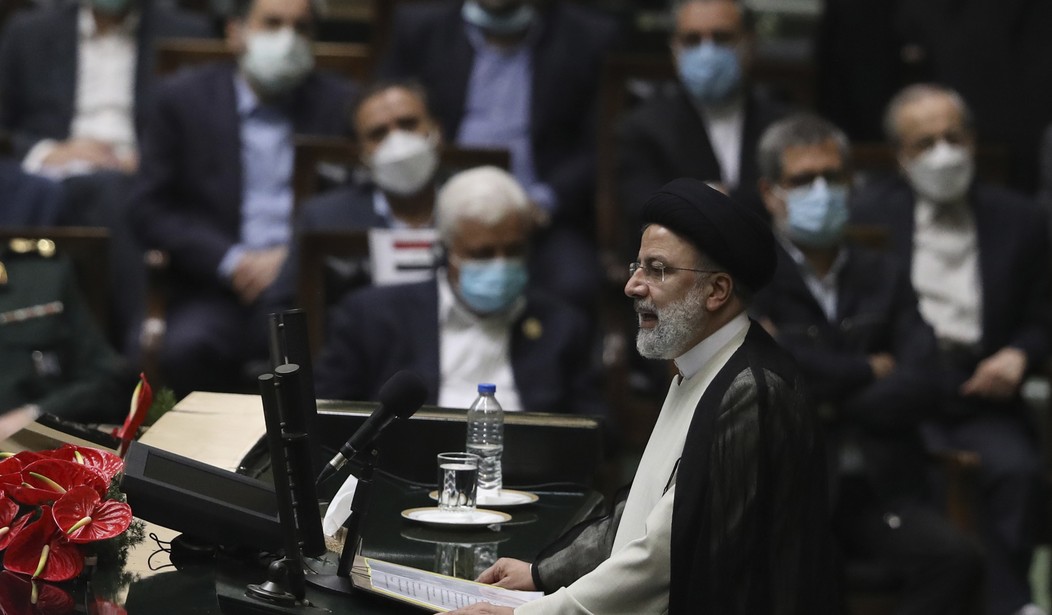On Monday, Iranian president Ebrahim Raisi began a five-day tour of Venezuela, Cuba, and Nicaragua, three Latin American countries governed by authoritarian, anti-Western regimes. Raisi’s three predecessors all visited the region previously, and Iran’s alliances with local authoritarians are not new. But this time, the strategic landscape is different. In 2023, China, Russia, and Iran are all chipping away at what used to be primarily uncontested U.S. influence. Raisi has come to claim Iran’s share in the spoils.
Since its establishment in 1979, the Islamic Republic of Iran has viewed Latin America as a fertile ground for the export of its revolution for two reasons. Tehran’s clerical leadership recognized the appeal of anti-American ideology and valued the region’s geographic proximity to the United States. Over the years, Iran has built government-to-government alliances while also spreading its ideology through grassroots proselytism, soft power, and disinformation platforms geared to Spanish-speaking audiences. What began in the early 1980s as a subtle and discreet effort to propagate revolutionary Iran’s worldview through mosques and cultural centers is increasingly loud and visible, thanks to Iran’s transnational alliances with hard-left movements and like-minded regimes.
The oil-rich Bolivarian Republic of Venezuela has been Iran’s indispensable partner in the region for almost two decades. During the presidencies of Venezuela’s Hugo Chávez and Iran’s Mahmoud Ahmadinejad, Caracas was a key facilitator of Tehran’s sanctions-busting efforts. The two regimes established business ventures and financial institutions in Venezuela that they used to launder Iranian money and procure sanctioned technology. They also launched direct commercial flights between their capitals and initiated military cooperation.
Venezuela has likewise become a center for Iran’s revolutionary agitation in the Western Hemisphere. In 2004, Tehran established the Centro de Intercambio Cultural Iran Latinoamerica, or CICIL, in Caracas. CICIL is part of the Al Mustafa International University, one of Iran’s main propaganda tools that the U.S. Department of the Treasury sanctioned in 2020 due to its material support for terrorist training and indoctrination. What began as a small, local propaganda effort has now branched out in virtually every country south of the Rio Grande and has expanded to include joint media operations and academic programs devoted to spreading a revolutionary worldview of resistance against America.
This much is concerning for the United States, but not new. Yet since the time of Chávez and Ahmadinejad, two significant changes have taken place, which Washington ignores at its own peril.
The first is the evolution of the Iran-Venezuela relationship from one of roughly equal partnership to one of Venezuelan dependence. Caracas has increasingly relied on Iran to address its own economic and structural woes, with Tehran stepping in to salvage Venezuela’s crumbling energy sector. Tehran has leveraged its growing clout over Caracas to obtain more regional access and influence. Like China and Russia, Iran understands that exporting ideology alone does not guarantee long-lasting friendships. Trade, business, and investments do.
The second change is regional: rising powers like China and Russia have sought to displace America by offering trade opportunities, military aid, investment, and technology without the kind of strings attached to traditional American engagement – environmental protection, democratization, good governance, transparency, and human rights. Their success is remarkable. Take China: its trade with Latin America grew 26-fold between 2000 and 2020; the region’s trade with China now constitutes almost nine percent of the region’s GDP, up from less than one percent in 2000.
The appeal of U.S. adversaries derives from changing global dynamics, which are in part driven by a growing desire, in the global south, to decommission the post-Second World War, rules-based international order, do away with the dollar as a global currency of trade, and remove the constraints of global, Western-inspired governance. In the early 2000’s, the rise to power of populist, left-wing leaders who resented America’s influence inaugurated this trend, which also allowed Iran to get in the door. Venezuela under Chávez, Ecuador (briefly) under Rafael Correa, and Bolivia under Evo Morales all bucked this trend, joining Nicaragua and Cuba as banes of America’s perceived imperialism. Ecuador’s flirt with Chávez was brief, while other countries remained firmly within Washington’s influence. The electoral pendulum briefly swung back across the region, making Castro-Chavismo look like a contained phenomenon. But in the third decade of the 21st century, a new electoral tide swept away governments traditionally aligned with Washington. Their successors have either switched sides or begun to hedge: not just Brazil, Argentina, and Mexico, whose foreign policy neutrality, global ambitions, and flirts with populism put them at odds with Washington, but also Peru, Colombia, and Honduras, are all shifting toward China and Russia. China and Russia are the big players in this great power competition seeking to unseat the United States as the world’s undisputed superpower, but in Latin America, at least, Iran is not far behind.
Iran has now come to the Western Hemisphere to take its share. Venezuela, alongside Cuba and Nicaragua – the other destinations of Raisi’s regional tour – views Iran as an emerging power and shares Tehran’s goal of eroding U.S. influence. Indeed, both regimes aspire to build a new multipolar world that eliminates“hegemony” and “empire” (Nicolás Maduro’s not-so-subtle allusion to the U.S. at a joint press conference with Raisi). The theme of resistance against America’s hegemony has dominated the rhetoric of Raisi’s visit to Caracas and accompanied his onward journey to Havana and Managua. There, like-minded dictators preside over small and struggling economies, trying to keep their power without concessions to democracy and human rights. They prefer to entrust rapacious authoritarians like China, Iran, and Russia with their economic development rather than coming to terms with Washington and its frequent insistence on democracy and transparency, the end of corruption, the plunder of the environment, and the silencing of civil society.
America, meanwhile, is on a lecture tour for boutique progressive causes rather than prioritizing the economic concerns at the top of most governments’ agendas. Just in the past six weeks, U.S. officials have visited Colombia and Guatemala to highlight migration and civilian security initiatives, Brazil to advance a joint bilateral agenda to fight ethnic and racial discrimination, and Colombia and Brazil to speak at a conference on the role of women in peace and security. Argentina, Peru, and Panama to address LGBTQI+ rights.
It is not that no one cares in Latin America or that ethnic and gender minorities are not mistreated. But Latin America does not want lectures on democracy, corruption, or human rights (though they should listen). It wants free trade agreements, 21st-century infrastructure, development opportunities, industrialization, markets for agricultural products, and access to first-world higher education. China, Russia, and now Iran are the ones bearing the gifts they need.
America used to be the indispensable power in the Western Hemisphere. It now must contend with competitors, who will stop at nothing to impose their worldview and empower those who share it. Raisi’s trip brought concrete benefits: agreements to expand cooperation in mining, shipping, petrochemical and oil industry, trade, telecommunications, science and innovation, medical and pharmaceutical research, agriculture, culture, academic exchanges, and more. In America’s moment of weakness, Iran has sensed an opportunity: this is the time to build on the foundations patiently laid in decades past.
A Western Hemisphere dominated by authoritarians like Iran can never be an American interest. Raisi’s visit may go relatively unnoticed in Washington. It should be a wake-up call.
Emanuele Ottolenghi is a Senior Fellow at the Foundation for Defense of Democracy, a non-partisan research institution devoted to the study of national security and foreign policy. Follow him on Twitter @eottolenghi.

























Join the conversation as a VIP Member